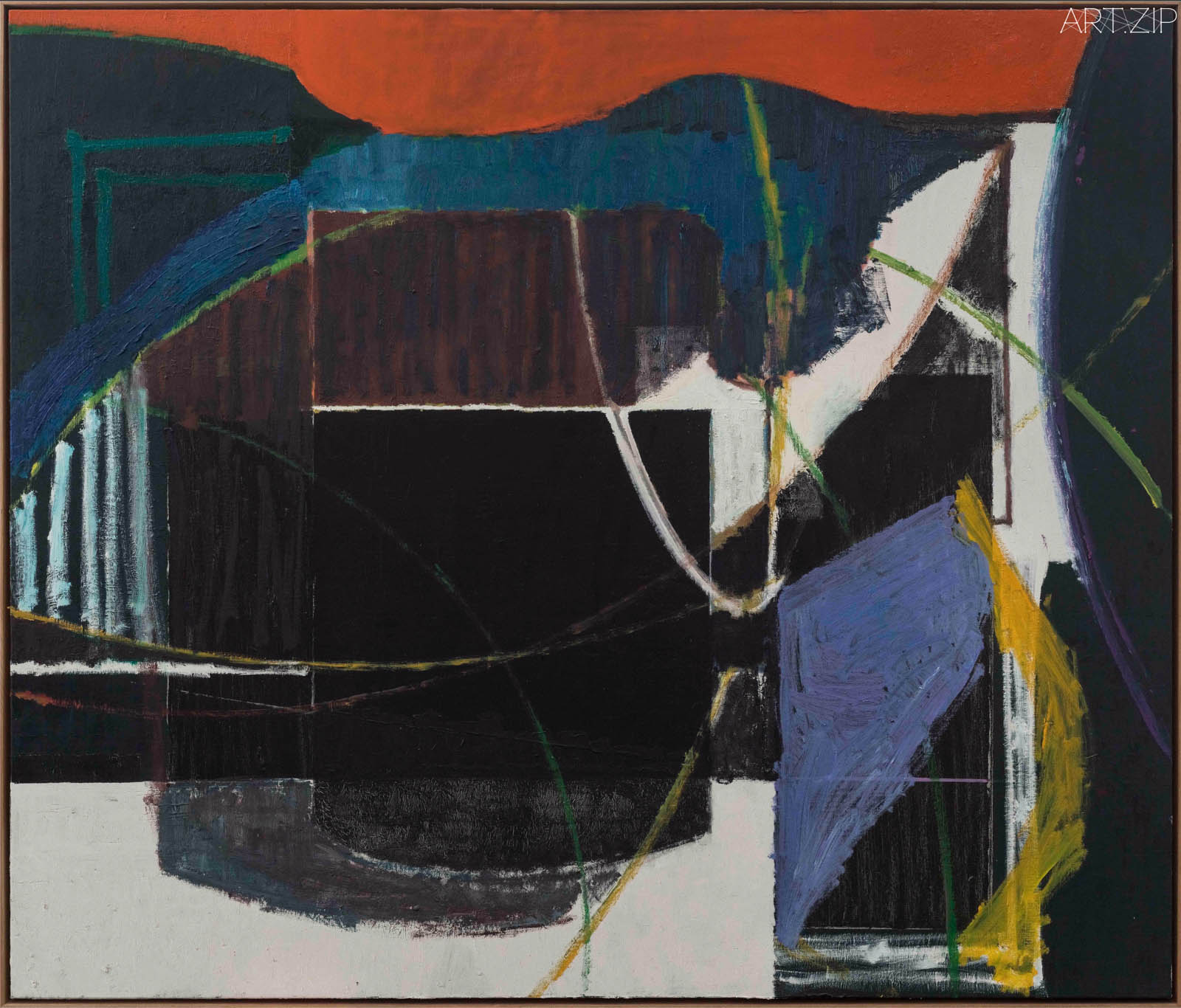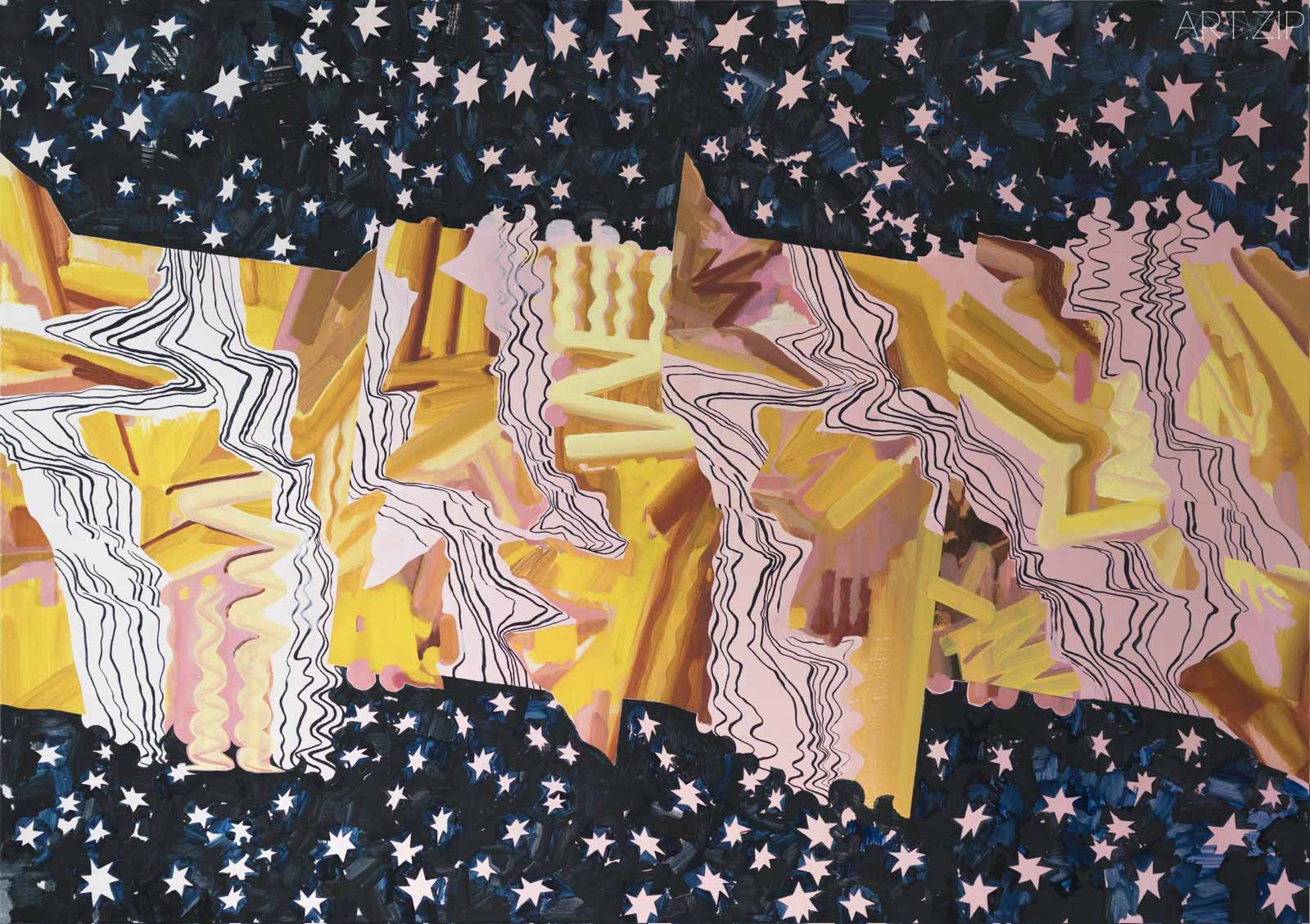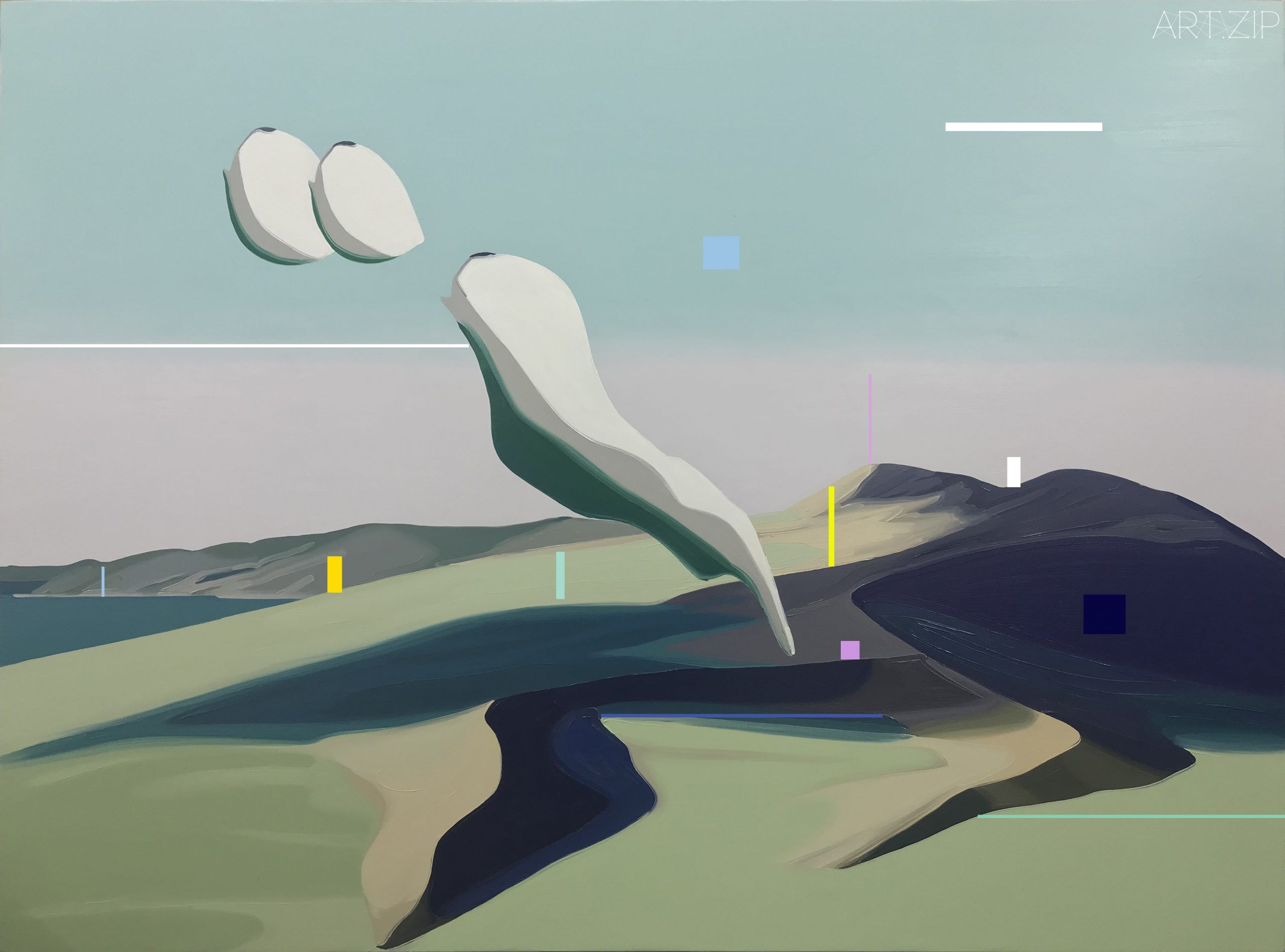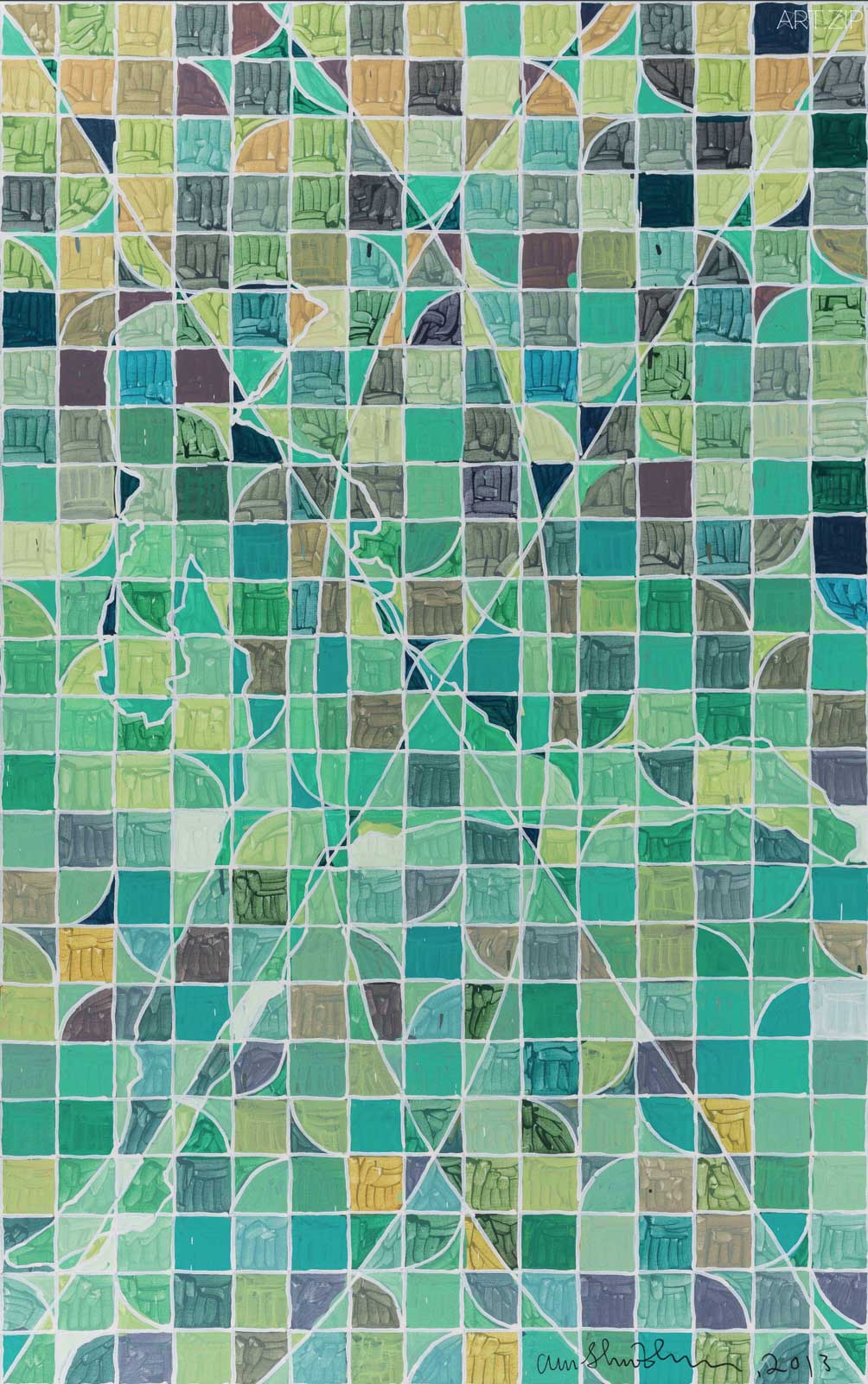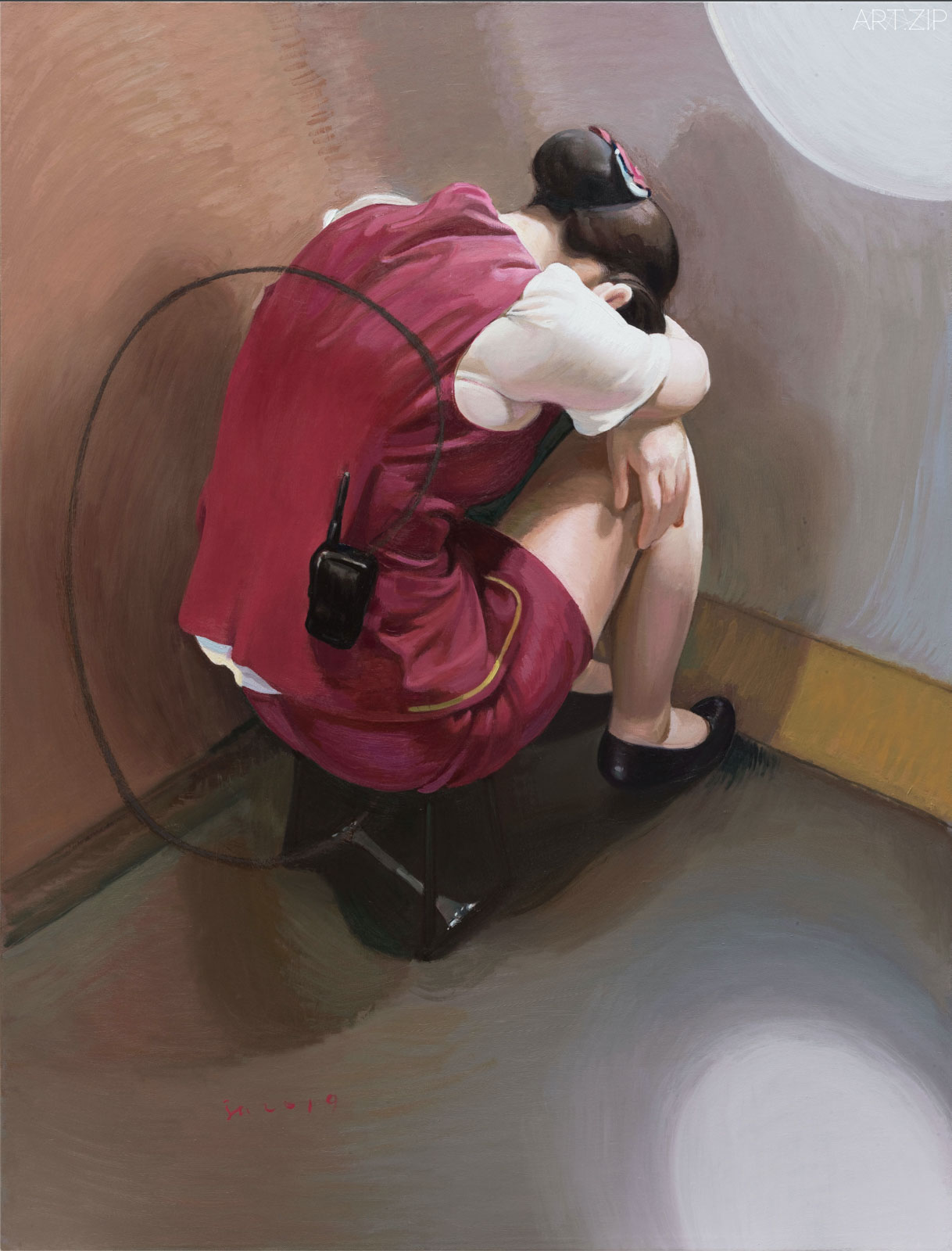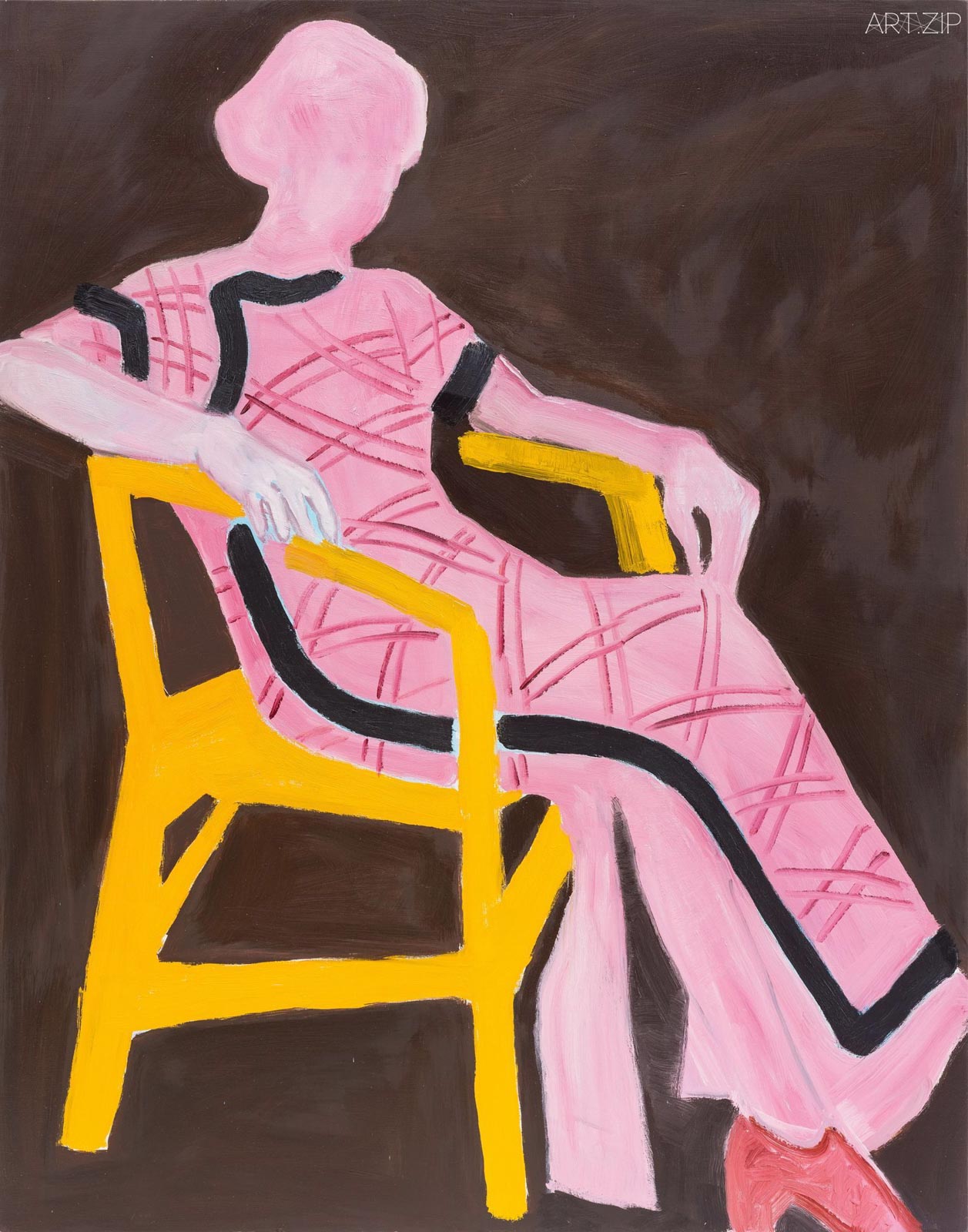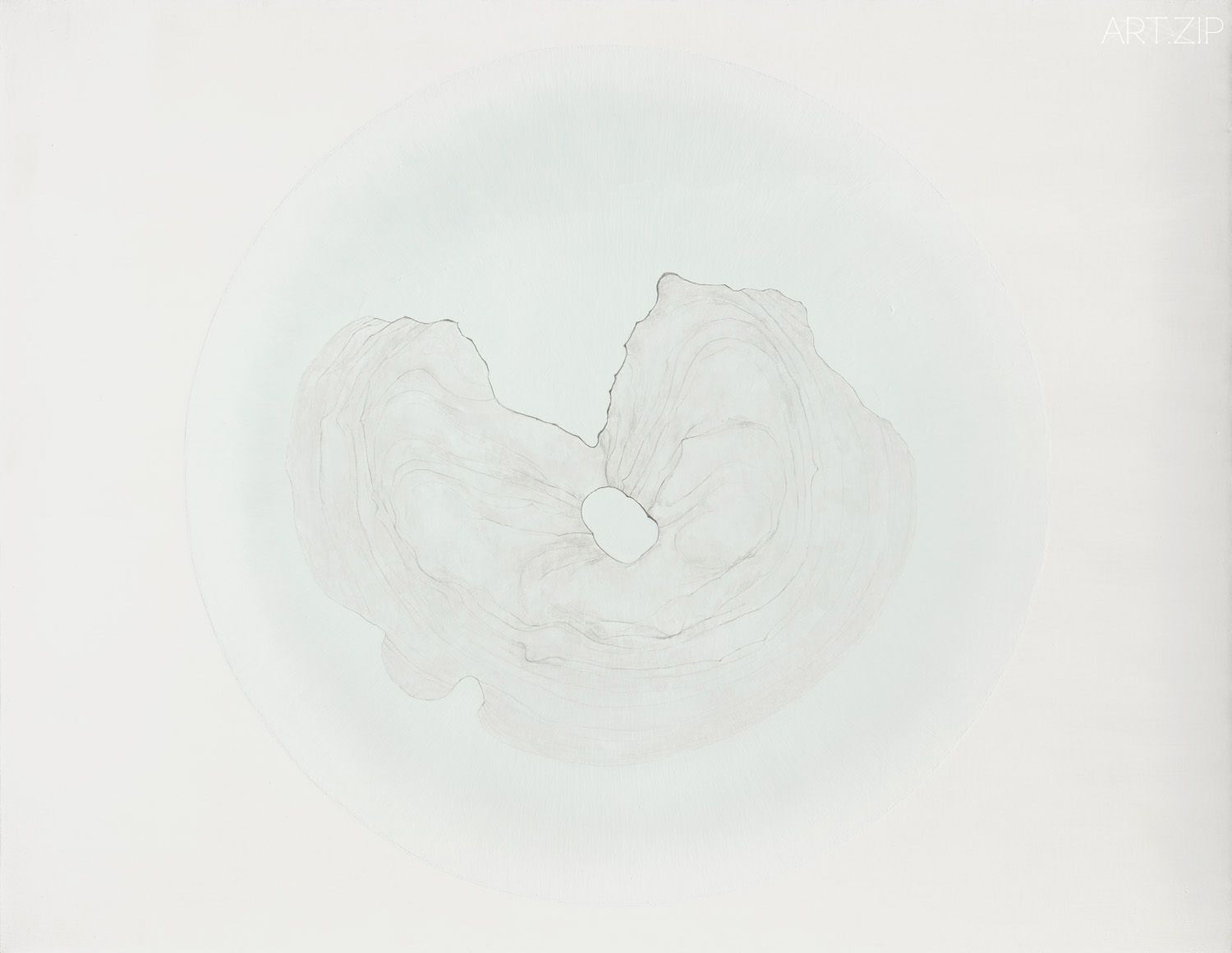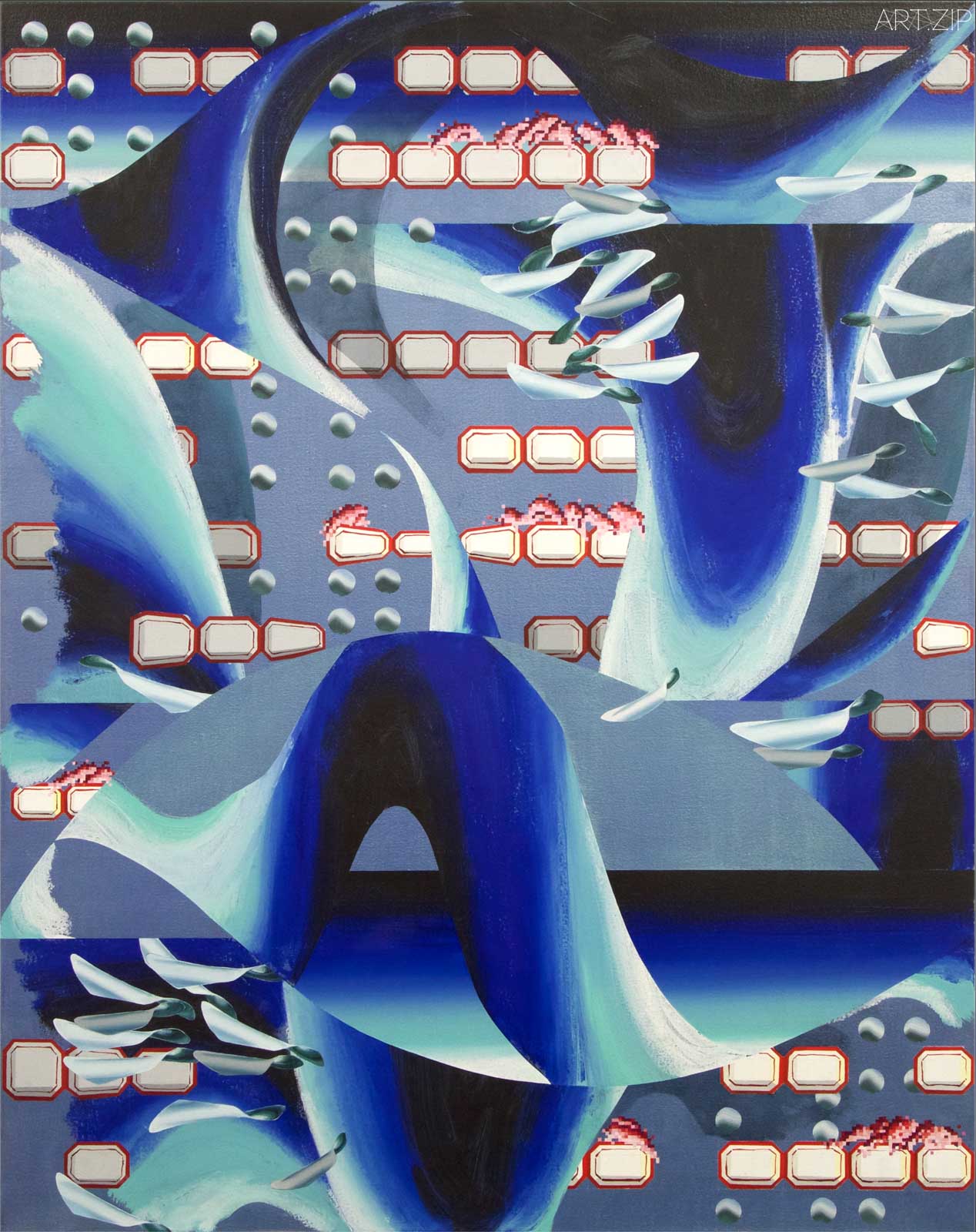
2018.3.29 – 31 @ Art Basel Hong Kong 2019
沿用3月16日開幕的吳山專個展的標題,
、
Following the theme of Wu Shanzhuan’s eagerly anticipated solo exhibition opening in March, for Art Basel Hong Kong 2019 Long March Space will bring with it a “holiday of painting.” Nine Long March Space artists (Liu Wei, Su Yu-Xin, Wang Jianwei, Wu Shanzhuan, Inga Svala Thorsdottir & Wu Shanzhuan, Zhang Hui, Vivien Zhang, Zhao Gang, Zhu Yu) will each show their paintings.
- Liu Wei 刘韡 (b. 1972) Outdoor《户外》, 2018 Oil on canvas 布面油画 170 x 200 cm
劉韡1972年生於北京,1996年畢業於中國美術學院油畫系。劉韡的創作成熟於中國發展進程中的一個重要階段,深受新世紀中國社會特有的變動和起伏影響——城市和人文景觀的變遷對其影響尤為突出。他以眾多不同媒介,諸如繪畫、影像、裝置及雕塑等來進行創作,並逐漸以自己獨特的藝術方式在世界舞臺上受到矚目。劉韡的作品表現出了受後杜尚主義啟發、與廣泛現代主義遺產進行交涉的特征。他的創作將發生於中國的無數政治及社會轉變所導致的視覺和智力層面的混亂凝聚成為一種多變且獨特的藝術語言。
Liu Wei (b.1972) was born and presently resides in Beijing, China. He was trained as a painter at the China Academy of Art, Hangzhou in 1996. Heavily influenced by the instability and fluctuation peculiar to twenty-first century China, in particular with respect to its physical and intellectual landscape. In the years since, with his paintings, videos and large-scale installations, Liu has become a singular presence on the global art stage. Post-Duchampian, and actively negotiating with the legacy of the Modern, his works are known for crystallizing the visual and intellectual chaos of China.
劉韡在近期的繪畫實踐中返還到對有機形式的描繪中。如果說曾經的“紫氣”系列以數字化的細節映射出城市發展的未來圖景與無限可能,那麽最新的“戶外”系列重新檢驗了人類中心主義視角下的“自然”及其自然屬性與秩序。質樸而奔放的筆觸堆砌成的巨大漩渦令人深陷,劉韡憑借這樣的感官困境反觀繪畫在當下遭遇的迷失與再定位。
In his recent practice of painting, Liu Wei has realized the restitution of organic forms. Saying that the past series of “Purple” reflected the picture of urban development with an endless amount of possibilities by digitized details, the latest series of “Outdoor” reexamines what is Nature under the anthropocentric view and its natural principles and sequences. The plain yet bold and unrestraint brushstrokes merge into a solid mass of maelstrom, which readily engages the audience and makes them feel drowned. By such a sensorial dilemma, Liu Wei reflects upon painting as being lost, unprepared and reoriented.
- Su Yu-Xin 苏予昕 A Sky Chart 《天空图表》, 2017 Oil on canvas 布面油画 140 x 200 cm
蘇予昕(生於1991年)2016年於英國倫敦大學斯萊德美術學院研究所畢業。目前創作於臺北、上海之間。蘇予昕的繪畫與其在各種媒介的實踐專註於視覺語言和神經感知之間的聯系。通過繪畫對圖像和影像進行捕捉,她的作品更傾向於抓住生活中模糊的感知和時刻的復雜交織。蘇予昕的繪畫構成了地平線細微的交替變化,建立起的視距差別使註視與觀察的節奏變得不同。色彩層層疊疊,多種透視產生出多種視角;她的作品探究的是人體經驗與感知中的韻律和流動,以及這些感知如何被編輯,折疊與收納進靜態意象中。在蘇予昕的藝術實踐中,風景繪畫正面的描繪作為中間地帶,使她在具象與抽象的轉換中進一步找尋新的圖像概念——靜物,圖表,電子日程,信息碎片和記憶以多聲道、多時區、多屏幕的印象混合輸出。在這個事物投射出來的印象比事物本身更豐富的時代,蘇予昕的風景描繪了多元感知的視角和當代印象主義。
Su Yu-Xin (b. 1991) holds an MFA in Fine Arts from Slade School of Fine Art UCL. She lives and works between Shanghai and Taipei. Her painting and other practices focus on the relationships between visual language and other sensorial perceptions. Rather than painting from images or photography, Su’s work often tends to explore the complexity of a moment or a vague perception in life. Su uses painting to construct a delicate alternation of horizons, in which varying distances elicit different paces of observation. The colourful layered surface and multiple-perspectives in her works generate a dynamic vision within each painting. Su’s paintings study how different rhythms, and fundamentally, the fluidity of human experience can operate and be stored inside still imagery. In her practice, the landscape is an in-between place, a traditional frontality in painting, which allows the artist to switch between figuration and abstraction, investigating the concept of new landscape – a mixture of still-life, graphs, digital calendars, fragments of text and memory. The landscape she is depicting is a field of hybrid vision and a contemporary Impressionism that has only come to exist in the present era.
“我活在一個那些事物投射出來的印象,比事物本身更繁雜的時代。這是一個圖像文法,這個圖像的每個零件闡述的畫面都極其明朗,但他們被擺置在一起而創造的關系、像那些每一個不相幹的廣告之間,那些看不見的過度和接合卻是如此抽象,如此難以觸及。”——蘇予昕
“I live in an era where the impressions projected from things are more complex than things themselves. This is a visual grammar, where each element of the image set forth on the picture plane is extremely clear, but these parts are arranged to create a relationship like the space between unrelated advertisements. These unseeable excesses and connections are so abstract and so difficult to touch.” – Su Yu-Xin
- Wang Jianwei 汪建伟 Cambrian No.28《寒武纪 No.28》, 2019 Oil and acrylic on canvas 布面油画、丙烯 150 x 200 cm
汪建偉1958年生於四川,從上世紀70年代起他開始藝術的實踐,即被視為中國當代藝術領域的先鋒。汪建偉在浙江美術學院學習繪畫期間大量閱讀存在主義哲學和中國歷史,受到這些經驗的影響,他早期以繪畫為主的創作帶有強烈的實驗性以及復雜的觀念;而自上世紀90年代至今,汪建偉持續探索綜合知識與跨學科對當代藝術的影響,嘗試使用不同學科的方法論去創造新的藝術語言,即在眾多的關系中,從知識層面發展和建立一種新的主體的可能性;在綜合知識的背景下,以哲學式的質詢,實踐一種交叉學科的觀看世界方式,並賦予這些實踐以形式。為此,其藝術作品呈現多元樣式,跨越影像錄像、戲劇、多媒體、裝置、繪畫和文本等領域。
Born in 1958 in Suining village in southwestern China, Wang Jianwei studied at the Zhejiang Academy of Fine Arts (1985–87), Hangzhou, China. Known for his investigations into the structures of time, Wang experiments with a range of mediums, including painting, sculpture, video, film, installation, and multimedia theatre. Well-versed in philosophy, he draws from mathematics, data-collection methods, scientific experimentation, and neurology to illuminate a social and mental space he calls the “yellow signal,” an intermediary zone where possibilities for a time-lapsed reality can flourish.
“……繪畫是我劇場與排演的一種繼續,劇場的概念與其說是空間,不如說是容納,即你需要接受更多尚未明確事物的準備,同時不要讓任何一種“意誌 ”起主導作用。這就是不確定性。另外,排演使繪畫原有的穩定性發生了變化,繪畫已經完全脫離了原有的判斷系統,排演使繪畫成為一種行動力。因為繪畫面對的是諸物的不穩定,所以我的繪畫也沒有固定的對象和明確的分類,一個人、一棵樹、一棟房子、一座山、任何一個東西,它們都脫離了原來的那個位置和環境,成為新的感知之物。”——汪建偉
“… my paintings are in a sense a continuation of my work in theatre and rehearsal. The concept of theatre is not space, but rather one of what is contained, that is, you must accept preparation for many as-yet undetermined things, and at the same time not let any “ideology” take the lead in your work. This is simply a state of uncertainty. Besides that, rehearsal alters painting’s original state of stability. The painting has already been completely separated from its original system of criticism, and rehearsal turns it into a force of action. Because painting faces the uncertainty of a multitude of things, my paintings also have no fixed object or clear classification. A person, a tree, a house, a mountain, or any one thing: they all have left behind their original positions and environment, becoming new objects of sensibility.” – Wang Jianwei
- Inga Svala Thorsdottir & Wu Shanzhuan 吴山专 & 英格-斯瓦拉·托斯朵蒂尔 (1960) When the Flame Thrower Becomes a Pattern (Green Tone)《当投火者成为图式(绿调)》, 2013 Acrylic on canvas 布面丙烯 214.5 x 135.5 cm
吳山專1960年生於中國舟山,1986年畢業於浙江美術學院師範系,1995年畢業於漢堡藝術學院 由藝術系。他在1985創立“紅色幽默”,1990年創立“國際紅色幽默”。
Wu Shanzhuan (b.1960) was born in Zhoushan, China. He graduated from Zhejiang Academy of Fine Arts in 1986 and Hochschule für bildende Künste in 1995. He founded Red Humour in 1985 and Red Humour International in 1990.
英格·斯瓦拉·托斯朵蒂爾1966年生於冰島,1991年畢業於冰島藝術學院繪畫系,1995年畢業於漢堡藝術學院 由藝術系。1993創立“雷神女兒粉化服務”,1999年創立BORG。
Inga Svala Thorsdottir (b.1966) was born in Iceland. She graduated from the Painting Department of the Icelandic School of Arts and Crafts in 1991 and Hochschule für bildende Künste in 1995. She founded Thor’s Daughter’s Pulverization Service in 1993 and BORG in 1999.
吳山專和英格·斯瓦拉·托斯朵蒂爾自1991年合作至今,進行聯合創作和舉辦展覽,工作和生活於漢堡、上海與冰島。長征空間2019年首展“吳山專:今天後來成了節日”由英格·斯瓦拉·托斯朵蒂爾為策展人,以繪畫來陳述他的工作量證明,作為一種抵抗當下倦怠綜合征的補救。
Thorsdottir and Wu have been working and exhibiting collaboratively since 1991 and both currently live and work in Hamburg, Shanghai, and Iceland. Curated by Inga Svala Thorsdottir, Long March Space’s first exhibition of 2019 shows paintings by Wu Shanzhuan, which is entitled “Today Became a Holiday.” Wu states his proof of work by painting and painting as a remedy to resist the burnout syndrome of the contemporary.
- Zhang Hui 张慧 Walking Together No.1《伴行 No.1》, 2019 Oil on canvas 布面油画 145.8 x 112 cm
張慧,1967年生於黑龍江省,1991年畢業於中央戲劇學院,現生活工作於北京,90年代末到21世紀初活躍於中國當代藝術界,後又於2004年組建異象聚小組。在早期的探索中,張慧發展出以行為和裝置為主的藝術創作,而後也在多媒體和現場戲劇等領域進行探索和實踐。
Zhang Hui was born in 1967 in Heilongjiang Province, he graduated in 1991 from the Central Academy of Drama and currently lives and works in Beijing. He was active in the Chinese contemporary art world of the late 1990s early 2000s, after which in 2004 he founded the Odd Phenomena Group. In his early explorations, Zhang Hui developed artistic creativity focused on action and installation, which his later practice centring on explorations into multimedia theatrical performance.
張慧將繪畫理解為一種問詢方式,對可持續性和其與時間、空間的概念關系進行深入的行為性的考察。他的作品將可讀性和引人入勝的戲劇性暗藏其中,同時又反思人們認識現實的真實性和唯一性,力求拓展現實事件及其圖像背後的結構。
Zhang Hui takes painting as a mode of investigation to undertake a performative exploration of duration and its relationship to the ideas of time and space. His works conceal eminently readable and bewitching theatricality within them, simultaneously profoundly rethinking the truth and uniqueness of known reality, striving to expand the structure behind real events and their images.
- Vivien Zhang 张月薇 Suspended Chutes (Tags) 《悬吊沛曲(标签)》, 2019 Acrylic, graphite, oil on canvas 丙烯、石墨、帆布油画 95 x 75 cm
張月薇(1990年出生於中國北京)曾旅居肯尼亞、泰國,現生活、工作於倫敦。2012年張月薇在斯萊德美術學院(倫敦大學學院)獲得本科學位,2014年於英國皇家藝術學院畢業,獲得繪畫碩士學位。2017年,她被評為“福布斯亞洲30位30歲以下傑出人才”。
Vivien Zhang (b. 1990) was born in Beijing, grew up in Beijing, Bangkok, and Nairobi, and currently lives and works in London. She graduated from the Slade School of Fine Art, UCL in 2012 and from the Royal College of Art in 2014 with a Master’s in Painting. In 2017, Zhang was featured in Forbes 30 under 30 Asia: the Arts.
“繪畫對於我來說是一個聚集地:畫布上集合了不同的繪畫語言、影響和參照。當下的繪畫是非時間性的;各個藝術風格也都成為了符號。繪畫不再按照線性時間的發展軌跡進入人們的視野,而是向著多元的趨勢發展。這與我們通過網絡接觸圖像、歷史和藝術的無窮便利息息相關。在這組新作品中,我繼續通過遊戲圖景的探索去挖掘創造另類地形的可能性。美國國家航空航天局發布的火星地貌、數字運算法則、全球幾大分立的網絡生態、德國藝術家查林·馮·海爾……這些是我近來關註和思考的事物。它們一同闖進我的作品,混合著、碰撞著,在變化的語境中碰撞激發出新的涵義。”——張月薇
“Painting is a place of assemblage for me, where different painterly languages, influences, and references come together in the space of a canvas. Painting is atemporal today; artistic styles have become motifs. Painting no longer follows a linear chronological developmental trajectory, as there is not just one, but multiple directions of movement. This is the result of unprecedented expanding accessibility (via the internet) – to images, to history, and to other artists. In this group of new works, I am continuing to explore the possibility of generating alternative landscapes, with reference to game-scapes. Things I’ve been looking at and thinking about include NASA images of Martian landscapes, algorithms, the varying discrete internet ecosystems, German artist Charline von Heyl… to name a few. They become mashed together in my work, colliding and triggering new meanings as their contexts change.” – Vivien Zhang
- Zhao Gang 赵刚 Hong Kong Women《香港女人》, 2018 Oil on canvas 布面油画 115.5 x 90 cm
趙剛1961年出生於北京,現工作和生活於北京和紐約。年僅18歲時參加星星畫會——此團體是最早的前衛藝術家群體,為中國當代藝術的發展鋪設了重要基石。此後,他曾就讀於荷蘭Maastricht國家藝術學院、美國紐約州Vassar學院、美國紐約州Bard學院,並於紐約生活、工作二十余年。在此期間,他逐步發展出鮮明的國際化特征,並創作出風格多元的作品。在2006年回到北京後,趙剛不斷地把焦點投向了他的獨特的個人經歷與中國歷史之間的糾纏——他既生於此地,卻又是陌生的新晉移民。
Zhao Gang (b. 1961, Beijing) currently lives and works in New York and Beijing. He made his artistic debut as a member of the Stars Group, one of the first avant-garde artist groups to open the era of contemporary art in China when he was just 18 years old. Shortly thereafter he pursued formal art education in Europe and the New York, studying at the State Academy of Fine Art, Maastricht, Holland; Vassar College, Poughkeepsie, USA; MFA, Bard College, Annandale-on-Hudson, USA. Afterwards, Zhao Gang lived overseas for over two decades, developing a diverse body of work as his perspective became distinctively international. Since returning to Beijing in 2006, Zhao Gang has turned his ever-expanding focus toward the entanglement of his personal past with Chinese history and his unique position, at once a native and a newcomer, in China today.
趙剛的繪畫實踐圍繞著他對中國轉型期知識分子問題的思考而展開。他不僅援引大量古典文人與民國精英的臉譜與形象,並且參考不同地域歷史的變遷以及文化沿襲的差異,重塑那些淹沒於記憶卻飽含復雜情緒的畫面。與此同時,女性題材在他的敏感處理下超越了同質的集體經驗,卻不限於情欲的表達。趙剛通過繪畫檢視在現代中國一度隱匿的知識分子話語與所謂流行的女性話語,從而顛覆占據主導地位的政治話語和大眾話語。他堅信繪畫的力量。
Zhao Gang’s painting practice centres on his thinking upon the problem of Chinese intellectuals during the transitional period. He does not only invoke various personas and images of ancient classical literati and elites from the Republican period but also refers to the historical changes of different regions and diverse cultural conventions, thus retracing the pictures from oblivion yet with deep affections. In the meantime, female subjects are rendered with his sensitive tone, which transcends the collective experience of homogeneity. However, he goes far beyond erotic expressions. By means of painting, Zhao Gang examines the intellectual discourse once invisible and the feminine discourse seemingly popular in modern China, thereby subverting the political discourse and mass discourse as the dominant player.
- Zhu Yu 朱昱 Stain T21《茶渍 T21》, 2013 Oil on canvas 布面油画 140 x 180 cm
朱昱1970年生於四川省成都市,被譽為90年代觀念藝術家的先驅。無論是從他的繪畫、觀念作品或是早期的行為作品,他所探索的藝術語言是很難找到類似的參照去進行歸類的。他對當代藝術語言獨立性的思考及深入探討,才是朱昱身為藝術家的工作的目的。
Zhu Yu (b. 1970) was born in Chengdu in Sichuan Province and was one of the pioneer artists of 1990s conceptualism. In his paintings, conceptual artworks or his early action pieces, it is very difficult to find any similar references to help classify what he is exploring in his artistic language. This independent thinking and deep probing into the semantics of contemporary art is precisely what Zhu Yu aims for in his art.
朱昱的繪畫並非為對靜物的簡單描繪抑或研究理解,藝術家在此更多的是通過日積月累的身體力行從觀念、技法、視覺語言、觀看方法等不同角度上去探索繪畫的本質。自“剩餐”系列,朱昱持續深入在繪畫這個語言上的研究,創作了“茶漬”、“石子”、“痕跡”等,至今已逾十年。朱昱的繪畫試圖回避社會隱喻性,從嚴格的批判實踐中提煉出一種獨特的觀看和再現這個世界的方式。
Zhu Yu’s paintings cannot be understood as simple still life depictions, what the artist is doing is delving into the inherent quality of painting by means of an accumulated bodily practice through various concepts, methods, visual languages and perspectives. From the “Leftovers” series, Zhu Yu continued to research into the language of painting in creating “Tea stains”, “Stone” ” Vestige” and other series over the past decade up until the present. Zhu Yu’s painting attempts to avoid any social metaphors, and from a strict critical practice extracts a unique way of seeing and reconstructing the world.

